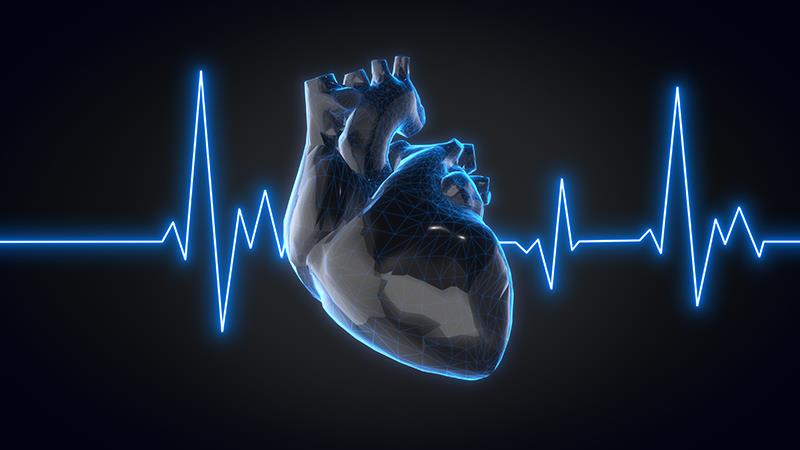SWT a win for HF in small study





In the CAST-HF trial, the addition of direct cardiac shockwave therapy (SWT) to coronary artery bypass graft (CABG) surgery improves left ventricular ejection fraction (LVEF) and physical capacity in individuals with ischaemic heart failure (IHF).
At 1 year, LVEF improvement from baseline was markedly greater in the SWT vs sham group as per cardiac MRI (11.3 percent vs 6.3 percent; p=0.0146). The effect was already evident 6 months postop (10.5 percent vs 5.7 percent; p=0.0068) and remained stable for up to a year.
This finding was supported by the results of the per-protocol analysis without imputation (12 percent vs 5.7 percent; p=0.0019), complete dataset analysis (12 percent vs 5.9 percent; p=0.0025), and multiple imputation technique using predictive mean matching (12.2 percent vs 6.3 percent; p=0.004). [Eur Heart J 2024;doi:10.1093/eurheartj/ehae341]
“The observed effects of SWT on myocardial function are meaningful and have important clinical implications,” the researchers said. The LVEF improvement with SWT may translate to reductions in mortality and HF hospitalizations. [Circ Heart Fail 2016;9:e002962; Circ Cardiovasc Interv 2022;15:e011284]
There were no device-related adverse events (AEs) or serious AEs.
Improved physical capacity
What is more, 6-minute walk test (6MWT) distance at day 360 was greater with SWT than sham (501 vs 399.6 m; p=0.01), with a delta from baseline to day 360 of 127.5 vs 43.6 m (p=0.028).
In a news report, study investigator Professor Johannes Holfeld from Innsbruck Medical University, Innsbruck, Austria, said that “this means that [SWT recipients] are able to go out for a walk with their dog again or go to the supermarket in their everyday life.” [https://www.bbc.com/news/articles/cv224pxz418o, accessed June 20, 2024]
Straightforward, short procedure
In IHF patients, surgical revascularization controls symptoms but is less effective in improving LVEF. [Eur Heart J 2019;40:87-165; Circulation 2022;145:e18-e114] “Morbidity and mortality remain high in these patients. Strategies for myocardial regeneration adjunctive to revascularization failed to show a substantial benefit and are not yet routinely used in clinical practice,” the investigators explained.
Given the lack of regenerative treatments available, they sought to evaluate the biological effects of direct cardiac SWT on myocardial regeneration. “We developed a system for SWT in direct contact with the myocardium during CABG surgery to reach all areas of the heart.”
The trial was conducted at the Medical University of Innsbruck, Austria and included patients presenting with multivessel disease and a severely reduced LVEF (≤40 percent) requiring surgical revascularization. Sixty-three patients (mean age 64 years, 11 percent women, mean LVEF 31 percent) were randomized 1:1 to either SWT or sham on top of CABG surgery. The SWT system consisted of a tabletop device and a sterile single-use applicator that releases electrohydraulic shockwaves.
“[We applied direct cardiac SWT] after CABG surgery since we consider complete revascularization and global reperfusion a prerequisite to render the ischaemic myocardium susceptible to a regenerative trigger. The fundamental underlying mechanism of SWT is mechanotransduction – a term describing that a physical stimulus translates into a specific biologic signal – in this case, most probably the release of microvesicles. We assume that this targeted physical stimulus to the application area explains the favourable side-effect profile of SWT,” they explained in detail.
“[Moreover, the] intraoperative application of direct cardiac SWT is technically a straightforward and short procedure that takes <15 minutes and can be performed during the usual reperfusion time after opening the aortic cross-clamp. As a result, neither anaesthesia nor operating times are affected by the addition of SWT to CABG surgery,” they added.
A solution to an unmet need
“[The results] suggest that SWT in addition to CABG is a promising novel therapeutic option for patients suffering from ischaemic cardiomyopathy,” said the researchers. “[T]his treatment strategy could contribute to solving the unmet clinical need for myocardial regeneration in [IHF patients].”
The researchers called for larger trials to ascertain whether the benefits of direct cardiac SWT on myocardial function could translate to better clinical outcomes.
While SWT resulted in improved EF overall, the investigators underlined that the improvement was not unitary. “RNA sequencing of intraoperative myocardial biopsies will be conducted to reveal further insights into the underlying molecular mechanisms.”
‘Space hairdryer’
“For the first time, we are seeing the heart muscle regenerate in a clinical setting, which could help millions of people,” noted Holfeld in the news report.
Dubbed the ‘space hairdryer’, the cardiac SWT device is awaiting European regulatory approval at the latter part of this year. Use outside the clinical trial setting is planned for 2025.